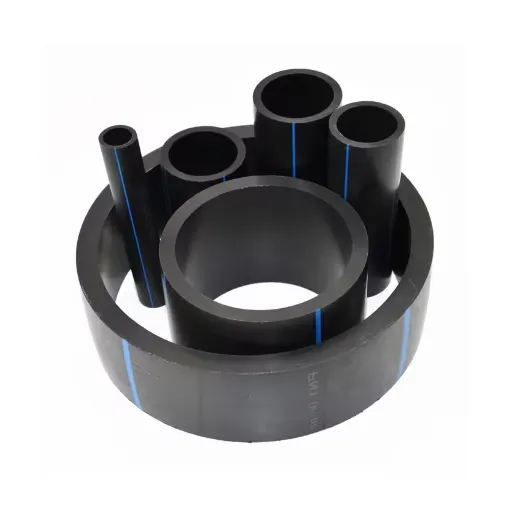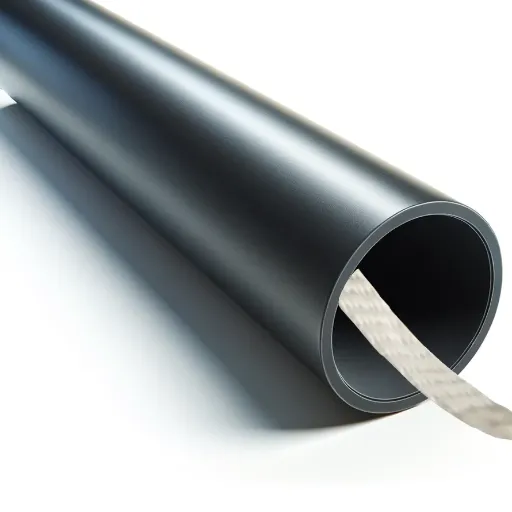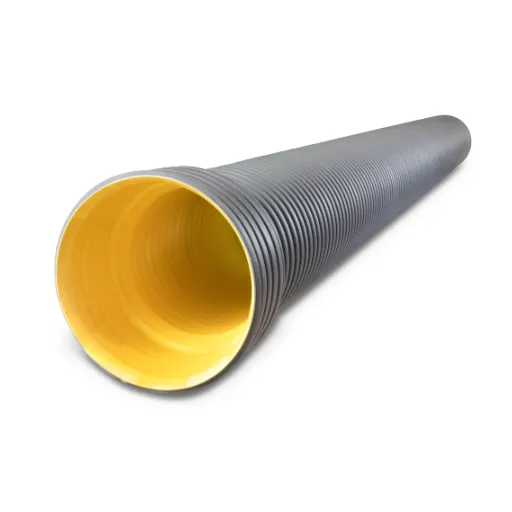Efficient and reliable irrigation systems are crucial for the success of modern agriculture, landscaping, and water management projects. Among the various components of an irrigation network, the choice of piping plays a pivotal role in ensuring durability, performance, and cost-effectiveness. High-Density Polyethylene (HDPE) sprinkler pipes have emerged as a superior option in this domain, offering unmatched advantages over traditional materials. This article explores why HDPE sprinkler pipes are the ideal solution for your irrigation needs, highlighting their technical benefits, long-term value, and adaptability to diverse environments. Whether you are upgrading an existing system or planning a new project, understanding the capabilities of HDPE pipes will help you make an informed decision.
What is an HDPE Sprinkler Pipe?
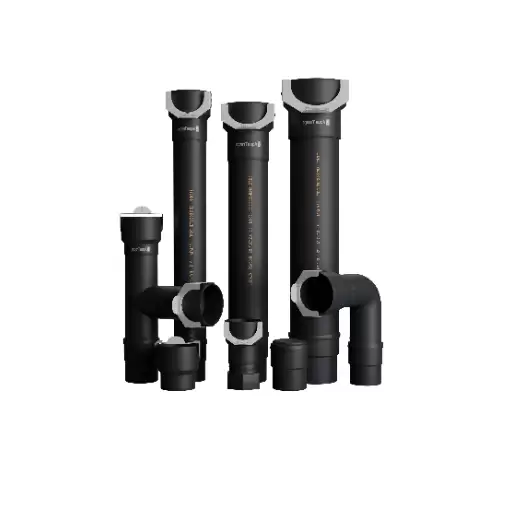
Understanding the Basics of HDPE Sprinkler Technology
Dispersion of water through specialized pipe systems is done with the use of HDPE sprinkler pipes. Applications irrigating systems use these pipes, designed with elastomeric and flexible HDPE material; these types of polymers tend to be resilient to tears and range high in temperature whilst sustaining extreme pressure and high forces.
The primary Flexible pipes technology is the HDPE material’s durability and robustness, the characteristics it offers help in withstanding demanding terrains. Thanks to the flexibility these materials offer, installation is made easier onto uneven or rugged terrains and reduces the chances of fractures or breaks under strain. Furthermore, these are resistant to chemical, abrasion as well and corrosion damages. All these characteristics make smooth-bore HDPE pipes an ideal solution requiring minimum maintenance expenditure over time.
Moreover, powder sprinklers, due to their elasticity, can easily and seamlessly be joined together using the enable put together with the help of heat. By this, no water is lost, aiding in crop cultivation efficiency, not only heightening but also helping conserve one of the modern era’s essentials – water. The ability to withstand chemicals enhances its applicability. Through these properties, HDPE powder sprinkle hose proves to be an optimal source of structures aiding irrigation.
How HDPE Sprinkler Pipes Compare to Other Materials
HDPE (High-Density Polyethylene) sprinkler pipes demonstrate greater adaptability in comparison to traditional materials such as metal and PVC due to their greater flexibility, durability, and environmental friendliness. Unlike PVC that is susceptible to cracking, both during high and low temperature extremes, HDPE pipes endure temperature fluctuations with ease. This makes them particularly ideal for irrigation systems in areas experiencing drastic weather changes. Furthermore, HDPE pipes offer exceptional resistance to corrosion which is a common problem that limits the lifespan of metal pipes.
Considering the cost-efficiency, HDPE pipes certainly offer value in the long run. Although the initial cost might be marginally more than PVC, the cost of maintenance, along with the operational costs over time, is considerably reduced due to the enhanced lifespan. The reduced need for replacements and leaks directly benefits irrigation systems, ensuring a dependable water supply while minimizing waste. These economic benefits particularly appeal to agricultural industries, both on a small and large scale.
In terms of environmental considerations, HDPE sprinkler pipes have a lower environmental impact compared to others. The manufacturing process of HDPE pipes consumes less energy than that of metal pipes, and their lightweight further lowers energy expenditure and emissions during transport. In addition, HDPE pipes can be recycled, decreasing the material waste in landfills at the end of the pipe’s lifespan. In general, the combination of efficiency, durability, and eco-friendliness found in HDPE sprinkler pipes surpasses other traditional materials used for pipes, making them increasingly favorable in modern irrigation system designs.
Benefits of Using HDPE in Sprinkler Systems
HDPE sprinkler pipes are remarkably durable because they are highly resistant to corrosion, scaling, and the effects of chemicals. These attributes ensure dependable service, even under difficult irrigation conditions, and drastically improve HDPE’s longevity while decreasing maintenance or replacement needs. Moreover, the material’s flexibility allows HDPE to endure movement, thermal expansion, and shifting soil without cracking, making it suitable for regions with dynamic weather or seismically active areas.
Cost efficiency stands out as another pivotal benefit provided by HDPE pipes. Their lightweight design makes them easier to handle and install, leading to lower labor costs when compared to bulky metal pipes. Moreover, HDPE’s capacity for hot fusion welding enables the creation of leak-free joints which reduces water loss and, in turn, decreases operational expenses over time while enhancing sprinkler system efficiency.
Furthermore, HDPE plastic’s environmental impact is less pronounced than its competitors. Its recyclability and lower energy input during production make it a prudent choice for irrigation systems. Unlike conventional piping materials, which may exacerbate waste and resource use, HDPE can be reused after serving its purpose, promoting sustainability in agricultural and landscape irrigation design. Collectively, these factors reinforce the notion of HDPE as an innovative and economically prudent material for sprinkler systems.
How Does a Sprinkler Irrigation System Work?
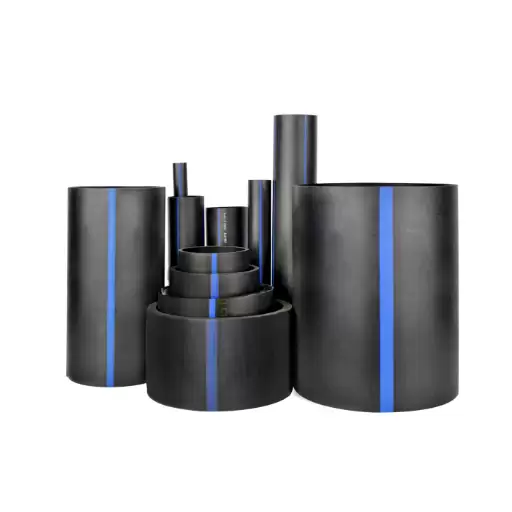
Components of a Typical Sprinkler System
The different core components of a typical sprinkler irrigation system work in unison to achieve uniform and efficient water distribution. These components are:
- Water Source: A reliable water intake sets the system in motion and can come from a municipal supply, a surface reservoir such as a lake or pond, or a well. The source’s flow rate and pressure directly affect the system’s overall performance.
- Pump: Pumps are fundamental for delivering water to the distribution network from the source. Based on system scale and requirements, pumps may be designed as centrifugal, submersible or vertical turbine pumps. Each is chosen based on its pressure and flow characteristic requirements.
- Mainline and Lateral Pipes: Sprinkler heads are supplied water by a network of pipes which include HDPE and PVC. PDVC pipes are used to form the distribution network in addition to the Mainlines which handle high volumes of water while feeding multiple lateral lines to various mlti directional sprinklers.
- Control Valves: Water flow, pressure and timing control are the primary functions of these valves. This allows for territorial irrigation. Automatic control valves that come equipped with electronic timers or sensors work with improved efficiency.
- Sprinkler Heads: The different kinds of sprinkler heads comprise of a fixed rotary or impact types which represent the point of discharge.Their full range covers area, the pattern of spray, and the pressure of water.
- Filtration Systems: For non-potable water sources filtration systems serve to deliver clean water while ensuring proper unclogging. Mesh, screen, and disc types are deemed suitable based on the contaminant profile of the source water.
- Automation and Control Systems: More developed systems now integrate controllers, sensors that measure the flow of water, and weather-based irrigation management systems. These help them conserve by changing schedules about rainfall, temperature, soil moisture content, and other environmental conditions.
The addition of these components to the system facilitates accurate water application based on schedule which helps achieve uniform growth of crops or landscapes while minimizing water. Under ideal conditions of design, installation, and maintenance will bolster performance, water efficiency, and system durability.
The Role of HDPE Pipe in Sprinkler Irrigation
The cost-efficient construction of modern sprinkler irrigation systems rely on High-Density Polyethylene (HDPE) pipes due to their flexibility and elasticity alongside being environmentally durable. As such, they can withstand extreme pressure which makes them useful for both miniature agricultural endeavors and expansive irrigation systems. Unlike traditional piping materials, HDPE’s corrosion resistance helps guard against chemical or soil degradation, preserving its structural integrity for prolonged periods.
Installation and transportation can be completed promptly with little labor due to the lightweight and complex design of HDPE pipes. In addition to this, their elasticity permits tolerance for ground movement and temperature shifts, enabling consistent water delivery in rough and difficult terrains. HDPE also exhibits low hydraulic resistance, which contributes to enhanced sprinkler system efficiency and ensures maximum flow of water, rendering it useful for irrigation.
Modern advancements in the manufacturing sector have made it possible to obtain HDPE pipes of different diameters and pressure ratings. This makes system customization more precise. These pipes can be used in different kinds of irrigation systems, from overhead sprinkler systems to drip systems. As a result, their applicability is further expanded. Users can reduce operational downtime, minimize maintenance costs, and promote sustainable water management practices over the long operational life provided by HDPE in sprinkler irrigation systems.
Advantages of Sprinkler Irrigation over Drip Irrigation
In comparison to drip systems, sprinkler irrigation offers more operational efficiency as well as flexibility and versatility. One of its major advantages remains the watering of crops as it enables uniform coverage over broad areas, making it ideal for processing areas with dense stands that need uniform moisture coverage. In comparison with drip systems, which are limited to emitters addressing specific root zones, sprinklers target the entire surface using a combination of centrifugal force and gravity, delivering water in the same way as rain.
However, one point where no other type of irrigation has an equal advantage is the low dependence on precise emitter positioning alongside sophisticated filter systems. Vertical leaky pipes, these emitters require a lot more advanced design than just being placed on vertical tubes. Sprinkler systems suffer less from clogging problems with debris and sediments that tend to precipitate with time, unlike their drip counterparts, which are highly susceptible to this. They do need less maintenance and can be set on rough surfaces with crops arranged in various random shapes.
Irrigation sprinklers further assist in removing pests and residues from plant leaves as they enable gentle washing of plant foliage, and for types of crops that need trimming. Moreover, enhanced precision and accuracy paved the way for advancements in resource use efficiency, effortless alteration of resource spending, and more modernized automation systems superseded unattended. The integration of these systems with modern tools aids in effortless alteration of schedules and active target modification.
Drip irrigation has its advantages in water conservation for particular uses, whereas sprinkler irrigation is still considered the best option for situations requiring versatility, low upkeep, and reliable efficiency across multiple farming environments.
Why is HDPE Preferred for Sprinkler Systems?
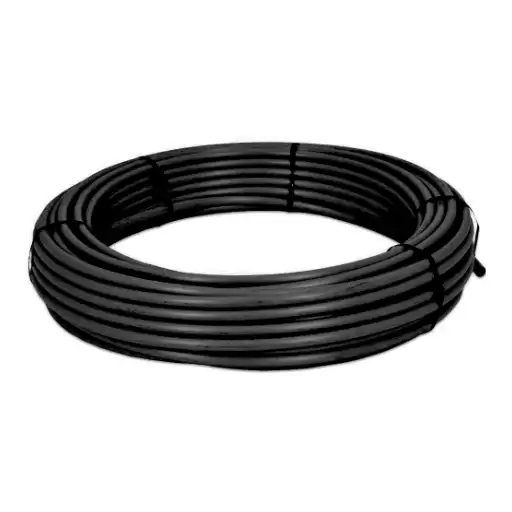
Durability and Corrosion Resistance of HDPE
Capable of water and irrigation systems, bug control, and fuel oil lines in HDPE, or High-Density Polyethylene, provides extreme quietus statu polymagistrates care for systems due to its resistance towards strain. In my experience, I believe that HDPE possesses greater merit when compared to metals and other traditional materials like PVC. Due to metals’ propensity to rust and rot due to water and changing environmental conditions, HDPE, on the other hand, benefits from years of exposure to water, moisture, and several chemicals without any form of degradation. Such a property makes it extremely useful in industrial and agricultural activities, which rely on these sectors.
One of the primary reasons I prefer HDPE in sprinkler systems is its resilience under high-pressure conditions. Owing to its construction, HDPE pipes tend to resist significant mechanical forces in their surroundings while bearing high amounts of stress without cracking or breaking in more erratic surroundings. To fend off system failures, this property adds to the long-term endurance and performance of the system. Moreover, due to its physical structure, cooled thermal fluids and treated water can be withstood, signifying no interference with the chemical make-up of the system. The combination of toughness to withstand changing conditions along with stability minimizes the needed maintenance greatly.
Lastly, the capability of HDPE to withstand UV rays improves its durability even more. While some plastics become weak and deteriorate under the sun’s relentless rays, HDPE is built to withstand harsh outdoor conditions. All of these factors, in my opinion, firmly make HDPE the most effective sprinkler system material due to its reliability, durability, cost savings, and superior performance in challenging conditions.
Cost-Effectiveness and Efficient Use of Water
HDPE alone saves money on material costs and during system operation, thanks to its lightweight and installation convenience. These HDPE sprinkler systems have lower expenses with maintenance and repair due to unparalleled leak, burn, and break resistance.
In water-critical regions, the agriculture sector’s water reserve strategy together with HDPE precise water delivery having almost zero leakage, allows for maximum water efficiency while optimizing crop health and productivity. This becomes possible with seamless integration of drip irrigation and other cutting-edge control systems that regulate water flow to automatically turn off water delivery when it isn’t needed. Besides everything else, HDPE is easily integrated with advanced control technology, allowing for the best water delivery control that users have ever witnessed.
The gap between research and modern hyrdoponics further reinforces HDPE’s claim as the most economical and water-efficient choice for commercial, agricultural and residential drone-operated irrigation systems. Hydrophonic-stand technology together with HDPE’s durability, environmental resistance, and water-efficient design cements the use of HDPE in modern sprinkler systems.
Environmental Benefits of Using HDPE Plastic
High-Density Polyethylene or HDPE is an advanced type of plastic that is globally accepted because of its alignable advantages with environmental standards. One such advantage is its exceptional strength and high resistance to degradation which means it has a long life span. Thus reducing the need for other products. Its plastics can be recycled multiple times with claims that recycling doesn’t significantly affect the quality of the materials. This further increases eco-friendliness by dependably reducing the production of virgin plastics, ultimately preserving natural resources.
Moreover, the HDPE’s lightweight contributes to reduced transport and agricultural emissions. It also makes the earth a safer place to live as it does not contain any toxic compounds that could harm the soil and water. For other materials, HDPE is more energy efficient while being produced and transported, thus lowering the amount of carbon dioxide and having a positive effect on its life cycle.
Along with the innovation in the manufacturing of HDPE, there is a focus on incorporating circular economy practices, which helps the modern systems and industries to achieve a new standard of opportunity along with efficiency. This provided balance, elevating economic performance, minimizing expenses, and protecting the environment by reducing harmful exhausts of greenhouse gases during the polymerization process, not only making it easier to produce HDPE but also making it usable in vehicle constructions.
What Are the Applications of HDPE Sprinkler Pipe?
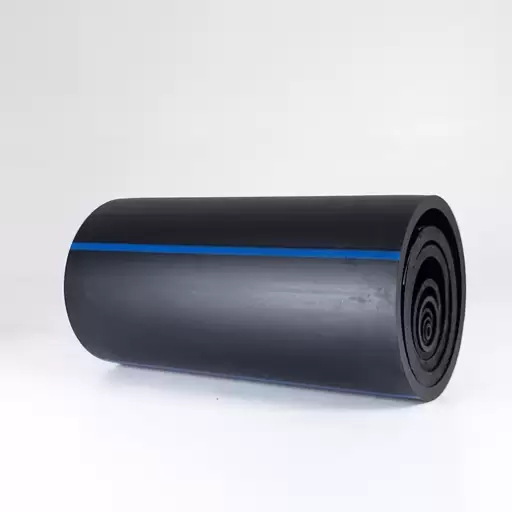
Uses in Water Supply and Distribution
The importance of HDPE sprinkler pipes can be highlighted through their use in the efficient and reliable supply/distribution of water in various industries due to their flexibility, durability, and ability to resist corrosion. Listed below are five of its applications:
- Urban Water Distribution Systems: The use of HDPE pipes in the distribution of potable water in urban areas is widespread. They perform well in underground systems due to their chemical and environmental stress resistance. This ensures smooth flow of water. Research indicates that, unlike older systems that use traditional materials, HDPE pipes minimize the leakage rate to less than 5% compared to 10-30% in other systems.
- Rural and Community Water Supply Projects: HDPE pipes represent an economical approach for the water supply systems of rural and remote communities. They endure long-distance transportation with little maintenance costs associated. Their lightweight structure not only lowers transportation expenditure but also facilitates installation making them ideal for projects set in difficult terrains.
- Industrial Water Distribution Applications: Industrial purposes require strong piping systems to transport water for use in the manufacturing or cooling processes. HDPE sprinkler pipes are frequently used in these applications due to their high pressure-bearing capacity as well as chemical resistance and long lifespan, ensuring service and operational efficiency.
- Irrigation and Agricultural Water Supply:The importance of growing crops using HDPE polytank pipes is of high importance. Now with their assitance ready, the flexible pipes with being able to handle contends best under high pressure systems performance allows for the effortless deployment to be done over large agricultural regions with water. There is a reduction in wastage of water to help manage water better attributes.
- Temporary and Emergency Water Lines: During the time of emergencies and natural disasters, no other pipe gets a better fix so easily like HDPE pipes. With their ease and quick adaptability to various terrains, these pipes are best suited during natural disasters or infrastructure failures. For these situations, their features are best capable of withstanding dynamic change of pressure. These ensures reliable taps even in situations of crisis.
All these swivel and versatile capabilities of the HDPE pipes are the main reason which fully supports why these pipes are major players of the modern day water distribution systems usable not just while considering sustainability but also water management resources techniques.
Industrial Applications of HDPE Pipes
The durability, flexibility, resistance to corrosion, and chemicals make HDPE pipes useful in various sectors. A few of the most notable applications include the following:
- Mining and Slurry Transportation: Due to their high wear resistance and smooth internal surfaces, HDPE pipes are ideal for transporting abrasive materials such as ore and mine tailings. They endure the extreme pressures and conditions found in mining operations which reduces downtime and the costs of maintenance.
- Oil and Gas Pipelines: The oil and gas industries use them extensively and depend on them when transporting petroleum products, natural gas, and other fuels. HDPE pipes are suitable for this purpose as they resistant to chemicals and high internal pressure, making them ideal for offshore and onshore applications.
- Chemical Processing: In chemical manufacturing plants, formidably aggressive chemicals require equal resistance and robust containment. This application is critical as long term durability is needed for leak prevention and HDPE pipes offer outstanding chemical resistance making them suitable for handling acidic or caustic fluids.
- Agricultural Irrigation Systems: Beyond sprinkler systems, HDPE pipes are extensively used within the agricultural sector for irrigational purposes, aiding in more precise water distribution. The lightweight design of these pipes allows easy handling, but more so, hydro-resistant materials make these ideal for prolonged exposure in harsh environmental conditions.
- Pipelines for Wastewater and Sewage Disposal: Transport of sewage and wastewater is made easier because of the strength and resistance to corrosion that HDPE pipes have. Their capacity to withstand toxic wastewater, ensure leak-proof joints, and prevent joint leakage, make them preferred in the industry to aid the effective disposal systems HDPE pipes are used in.
These illustrations demonstrate the importance of effectiveness and infrastructure sustainability that HDPE pipes serve in various industries.
Who are the Leading Manufacturers of HDPE Sprinkler Systems?
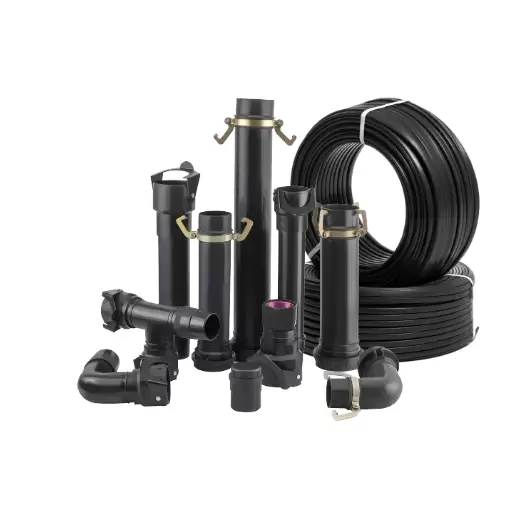
Key Features and Innovations by Top Manufacturers
In terms of the top manufacturers of HDPE sprinkler systems, one should assess the adequate level of innovation, reliability, and performance of the solutions they offer. The major players in this market concentrate on crafting systems that fulfill rigorous industry requirements and are, at the same time, adequately durable, efficient, and economical. Sino Pipe Factory is another notable manufacturer, along with some others, that are famous for their new technologies and advanced production facilities. Their Systems are designed for low irrigation water leakage, more irrigation efficiency, and sustainability for decades, which makes them the choice for a variety of industries.
Sino Pipe Factory is a manufacturer of HDPE Sprinkler Systems for Agriculture. This company has a website at sinopipefactory.com. They boast advanced methods of manufacturing, which result in high strength and impact resistance for their products. The systems are shown to be free of failures even in harsh conditions of use (Corrosive, UV, and eroding soils). Furthermore, Sino Pipe Factory applies advanced technologies of modern joints with non-leakage joints, which lowers the maintenance work and resources that are used. The focus on key accuracy in framing and material quality improves the reliability of their systems.
What makes Sino Pipe Factory unique is the uninterrupted product innovation from agricultural irrigation to industrial water usage management. Their comprehensive system solutions come with specific customizable configurations to meet individual needs. With a primary emphasis on resource conservation and extending infrastructure life, Sino Pipe Factory has emerged as an industry leader in manufacturing HDPE sprinkler systems by consistently advancing industry benchmarks. Clients all over the world rely on them for strategic partnerships due to their unmatched product quality and relentless innovations.
Evaluating HDPE Sprinkler Pipe Suppliers
Determining the right suppliers for HDPE sprinkler pipes entails both an understanding of resources and the suitability of vendors’ offered products and services. Suppliers need to guarantee the required specifications regarding the tensile strength, durability, and UV resistance of the pipes manufactured. Also, within a supplier’s process, their precision cutting and turning CNC equipment needs to ensure that the parts produced are defect-free and reliable over time.
Another essential element is the supplier’s capability for customization and scalability. This encompasses the supply provided, such as pipes of different diameters, lengths, and pressure ratings tailored to an agricultural or industrial requirement. Also, evaluating the vendor’s supply chain efficiency, lead times, and inventory levels becomes critical to maintaining seamless operations.
Support from a technical branch also becomes crucial; most contractors expect reputable suppliers to issue documentation, but also offer guidance forthe installation and maintenance of the provided. Regarding documents issued, customer footprint, as well as any lasting reputation, also becomes critical in ensuring a contractor makes a correct choice, together with other specifics aimed at verifying sustainable practices within materials used by the vendor.
References
Frequently Asked Questions (FAQ)
Q: What makes HDPE sprinkler pipes the best choice for irrigation?
A: HDPE sprinkler pipes are best preferred for irrigation because they are made of high density polyethylene, which offers excellent flexibility and durability. They are leak proof, ensuring efficient water transport without loss.
Q: How do HDPE pipes compare to PVC pipes in irrigation systems?
A: Unlike PVC pipes, HDPE pipes provide higher flexibility and are less prone to cracking under high pressure. HDPE pipes are available in a range of diameters and can withstand varying environmental conditions, making them suitable for diverse irrigation needs.
Q: Are HDPE sprinkler pipes suitable for high-pressure irrigation systems?
A: Yes, HDPE sprinkler pipes are designed to handle high pressure. They are made to convey water efficiently in systems that require strong and reliable piping solutions.
Q: Why is high-density polyethylene preferred for sprinkler pipes?
A: High-density polyethylene is preferred due to its strength, flexibility, and resistance to corrosion and chemicals. This makes it ideal for long-term use in irrigation systems.
Q: What sizes are HDPE sprinkler pipes available in?
A: HDPE sprinkler pipes are available in sizes ranging from 63 mm to 200 mm outer diameter, providing options suitable for both small-scale and large-scale irrigation projects.
Q: Can HDPE pipes be used in systems with electricity in irrigation?
A: Yes, HDPE pipes can be effectively used in systems involving electricity in irrigation. Their non-conductive nature ensures safety and reliability in such setups.
Q: What is the benefit of using a coupler with HDPE pipes?
A: Using a coupler with HDPE pipes ensures a secure and leak-proof connection between pipes and fittings, enhancing the overall efficiency and reliability of the irrigation system.
Q: How do HDPE pipes contribute to water saving in irrigation?
A: HDPE pipes ensure minimal water loss due to their leak-proof design and efficient conveyance of water. This contributes significantly to water saving in irrigation systems.
Q: Are HDPE pipes compatible with other types of pipes, like MDPE or LDPE?
A: Yes, HDPE pipes can be integrated with other types of pipes, such as MDPE and LDPE, using appropriate fittings. This compatibility allows for versatile and adaptable irrigation solutions.




